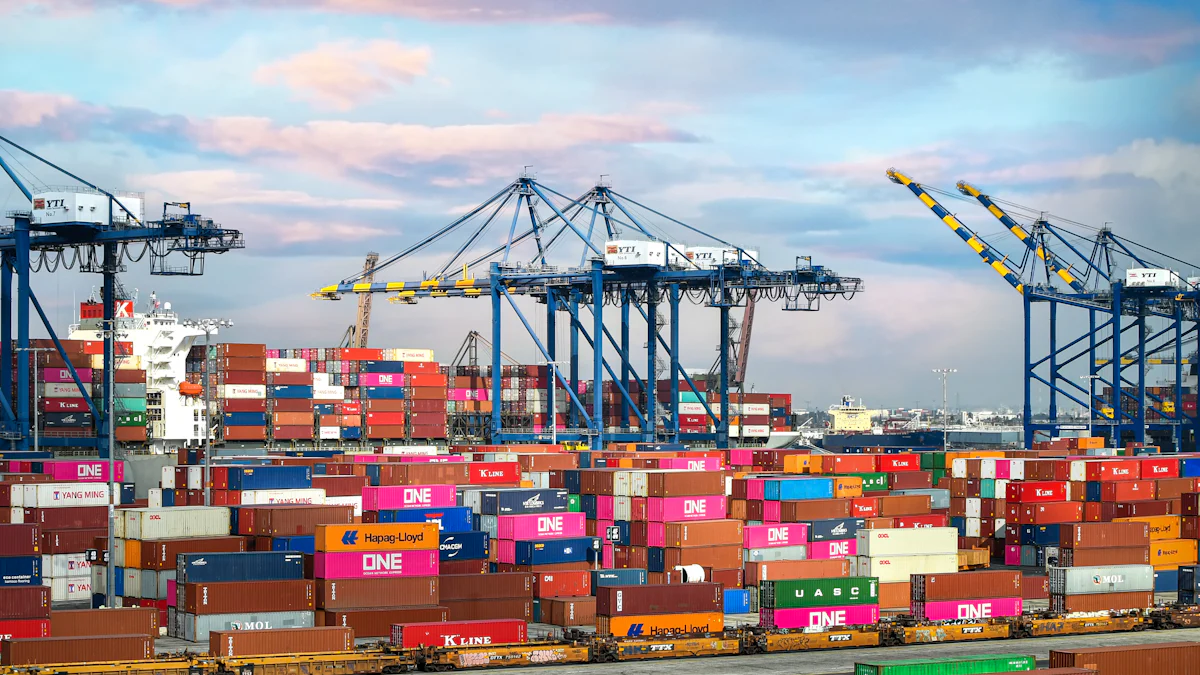How to Find Reliable and Affordable Logistic Options

Logistics plays a crucial role in modern business operations. Efficient logistics management ensures the smooth flow of goods, information, and resources from origin to consumption. Businesses often face challenges in finding reliable and affordable logistics solutions. High costs and inconsistent service can disrupt operations and affect customer satisfaction. This blog aims to provide actionable tips and criteria for selecting logistics providers. Implementing these strategies will help businesses achieve Reliable Logistic Transit and maintain a competitive edge.
Understanding Reliability in Logistics

Key Indicators of Reliability
On-time delivery rates
On-time delivery rates serve as a critical measure of reliability. High on-time delivery rates indicate that a logistics provider consistently meets deadlines. Businesses should prioritize providers with strong performance in this area to ensure smooth operations.
Customer reviews and testimonials
Customer reviews and testimonials offer valuable insights into the service quality of logistics providers. Positive feedback from previous clients highlights reliability and responsiveness. Prospective clients should consider these reviews when evaluating potential partners.
Industry certifications and standards
Industry certifications and standards demonstrate a logistics provider's commitment to excellence. Certifications such as ISO 9001 or C-TPAT indicate adherence to high-quality management practices. Businesses should seek providers with relevant certifications to guarantee reliable service.
Assessing Reliability
Conducting background checks
Conducting background checks helps verify the credibility of logistics providers. Businesses should investigate the provider's history, including any past issues or disputes. This step ensures that the chosen provider has a solid reputation.
Requesting performance reports
Requesting performance reports allows businesses to assess a provider's track record. These reports typically include key metrics such as on-time delivery rates and damage rates. Analyzing these metrics helps identify reliable logistics partners.
Evaluating customer service responsiveness
Evaluating customer service responsiveness is essential for assessing reliability. Prompt and effective communication indicates a provider's dedication to customer satisfaction. Businesses should test the responsiveness of potential providers before making a decision.
Evaluating Affordability in Logistics
Cost Factors to Consider
Shipping rates and fees
Shipping rates and fees significantly impact logistics costs. Businesses must evaluate the rates offered by different carriers. Factors such as mode of transportation, shipment weight, and dimensions influence these rates. Comparing rates from multiple providers ensures the selection of cost-effective options.
Additional services and hidden costs
Logistics providers often include additional services and hidden costs in their pricing. Fuel surcharges, accessorial fees, and minimum charges can increase overall expenses. Businesses should request detailed quotes that outline all potential fees. This transparency helps avoid unexpected costs.
Volume discounts and long-term contracts
Volume discounts and long-term contracts can reduce logistics expenses. Providers may offer lower rates for larger shipments or extended agreements. Businesses should negotiate these terms to secure favorable pricing. This strategy promotes cost savings over time.
Strategies to Reduce Costs
Negotiating with providers
Negotiating with logistics providers can lead to significant cost reductions. Businesses should leverage their shipping volume and frequency to obtain better rates. Effective negotiation requires a clear understanding of market rates and provider capabilities.
Leveraging technology for efficiency
Technology enhances logistics efficiency and reduces costs. Implementing logistics management software streamlines operations and improves tracking. Automated systems optimize route planning and inventory management. These improvements lead to cost savings and increased reliability.
Consolidating shipments
Consolidating shipments minimizes transportation costs. Combining smaller shipments into larger ones reduces the number of trips required. This approach lowers fuel consumption and labor costs. Businesses should coordinate with providers to maximize consolidation opportunities.
Balancing Reliability and Affordability
Prioritizing Your Needs
Identifying critical logistics requirements
Businesses must identify critical logistics requirements to balance reliability and affordability. Key factors include delivery speed, shipment volume, and destination reach. Understanding these needs helps in selecting suitable logistics providers.
Weighing cost vs. reliability
Weighing cost against reliability involves evaluating trade-offs. Lower costs may mean longer delivery times or less comprehensive services. Businesses should assess the impact of these trade-offs on operations and customer satisfaction. Prioritizing essential features ensures a balanced approach.
Making Informed Decisions
Comparing multiple providers
Comparing multiple providers is crucial for informed decision-making. Businesses should gather quotes and service details from various logistics companies. This comparison highlights differences in pricing, service quality, and additional offerings. A thorough evaluation leads to better choices.
Using decision-making tools and software
Decision-making tools and software enhance the selection process. Logistics management systems provide data-driven insights into provider performance. These tools help in analyzing costs, tracking shipments, and optimizing routes. Implementing technology improves efficiency and reduces costs.
Seeking recommendations and referrals
Seeking recommendations and referrals adds value to the decision-making process. Industry peers and business networks can offer insights into reliable logistics providers. Positive testimonials and case studies from other companies build confidence in potential partners. Trusted referrals often lead to successful collaborations.
Reliable Logistic Transit

Ensuring Reliable Logistic Transit
Choosing trusted transport companies
Selecting a trusted transport company ensures dependable service. Companies like FreightCenter and TLS Transportation offer secure and rapid freight services. These companies emphasize customer satisfaction and build trust through excellent service. Businesses should prioritize providers known for their reliability and strong track records.
Evaluating transit times and schedules
Evaluating transit times and schedules is crucial for maintaining supply chain efficiency. Companies must analyze the delivery timelines provided by logistics partners. Reliable providers, such as CargoFlip, use digital technology to monitor transport activities and ensure timely deliveries. Accurate scheduling prevents delays and disruptions in operations.
Assessing security measures
Assessing security measures protects valuable consignments during transit. Logistics providers should have robust security protocols and valid insurance policies. CargoFlip offers comprehensive coverage to safeguard shipments from damage or loss. Businesses must choose providers that prioritize safety and have stringent security measures in place.
Affordable Logistic Transit Options
Ground shipping
Ground shipping offers a cost-effective solution for transporting goods. This mode of transport is ideal for short-distance deliveries and smaller shipments. Companies can save on costs by consolidating shipments and optimizing routes. Ground shipping remains a reliable option for businesses seeking affordable logistics solutions.
Air transport
Air transport provides unmatched speed for time-sensitive deliveries. This mode of transport ensures high security and fixed schedules, often resulting in lower insurance premiums. Companies like WareIQ receive commendations for punctuality and efficiency in air transport. Businesses should consider air transport for urgent and high-value shipments.
Maritime transport
Maritime transport is suitable for large-volume shipments over long distances. This mode of transport offers cost savings for bulk goods and non-urgent deliveries. Businesses can leverage maritime transport to reduce logistics expenses while maintaining reliability. Providers specializing in maritime logistics ensure safe and efficient handling of cargo.
Reliable and affordable logistics options are crucial for business success. Evaluating key indicators of reliability, such as on-time delivery rates and customer reviews, ensures dependable service. Assessing cost factors, including shipping rates and hidden fees, helps manage expenses. Businesses should apply these strategies to optimize logistics operations. Start evaluating logistics options today to achieve efficiency and cost savings.
See Also
Maximizing Efficiency: A Comprehensive Logistics Cost-Cutting Manual
Affordable Logistics Solutions: Your Budget's Greatest Ally
Unleashing Cost Savings: Expert Tips for Efficient Supply Chains
Achieving Success in High-Tech Manufacturing Through Lean Logistics
Revolutionizing Efficiency: The JUSDA Approach to Logistics Optimization
